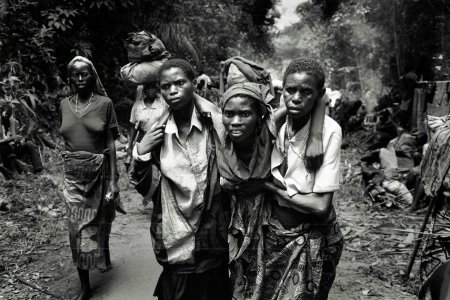On 30 March 1997 and in the days that followed, AFDL/APR units killed several hundred refugees in the presence of a number of senior APR officials between Katshungu and Shabunda in the towns of Ivela, Balika, Lulingu and Keisha, and at the Ulindi bridge. The victims, including a large number of women and children, were mostly survivors from the Chimanga camp who had found refuge in Katshungu, a town fifty-four kilometres north-west of Shabunda. The massacre zone remained officially inaccessible to aid agencies for a number of days but these organisations were nonetheless able to observe cleanup operations and the presence along the road of human remains and personal effects that belonged to the refugees.

“In danger of being killed at any moment, those in these groups, who were unfamiliar with their surroundings and undernourished, received no humanitarian aid. Having blocked aid agencies from operating outside a 30-kilometre radius of Bukavu, AFDL/APR officials established the condition that AFDL facilitators must accompany all their missions. According to several witnesses, these facilitators took advantage of their presence alongside the aid workers to supply AFDL/APR soldiers with information about the whereabouts and the movements of refugees. In this way, the soldiers were able to kill the refugees before they could be recovered and repatriated. During the same period, AFDL/APR soldiers officially barred Zairian civilians living in the region from giving assistance to refugees. Under this restriction, soldiers killed an unknown number of Zairians who had directly assisted refugees or collaborated with international NGOs and UN organisations to locate them and bring them assistance. The total number of refugees who died of hunger, exhaustion or disease in this part of South Kivu is impossible to establish but is probably in the region of several hundred, or even several thousand”
Attacks against Hutu refugees – Shabunda territory (South Kivu)
MSF, “L’échappée forcée: Une stratégie brutale d’élimination à l’est du Zaïre”, April 1997, pp.8–10.
